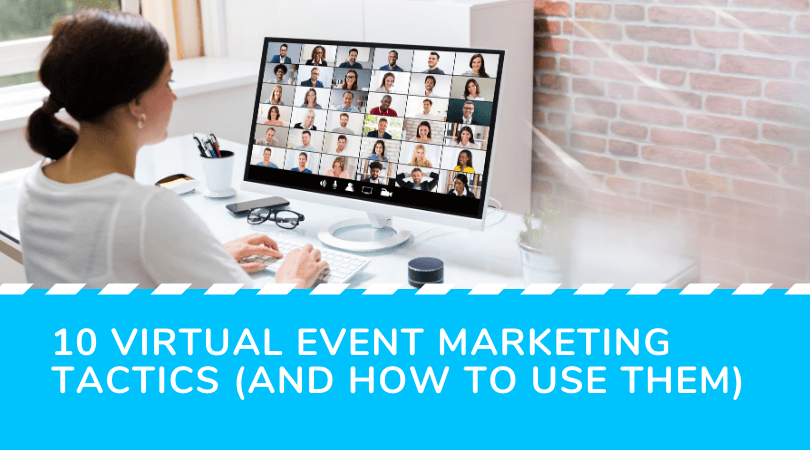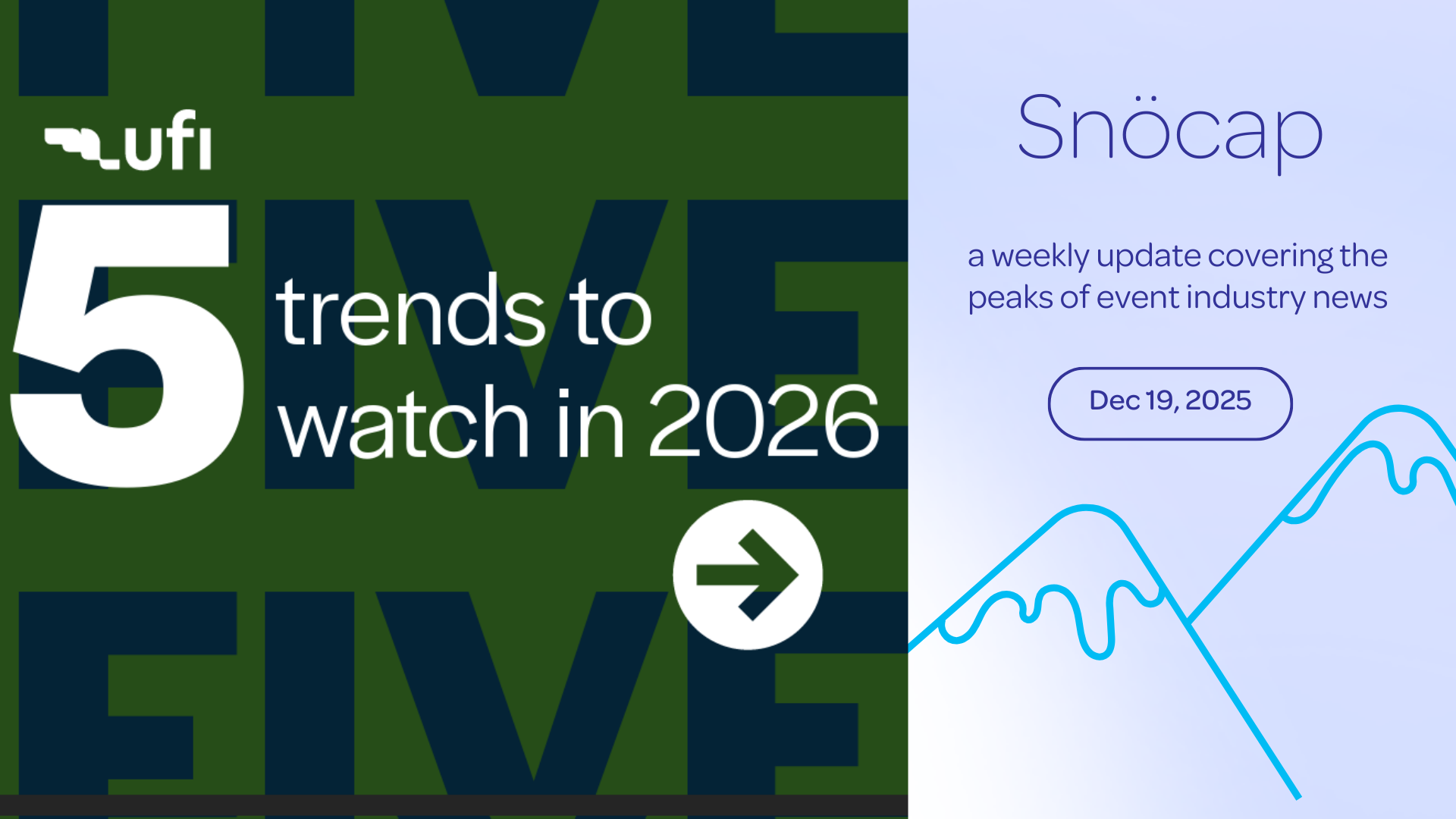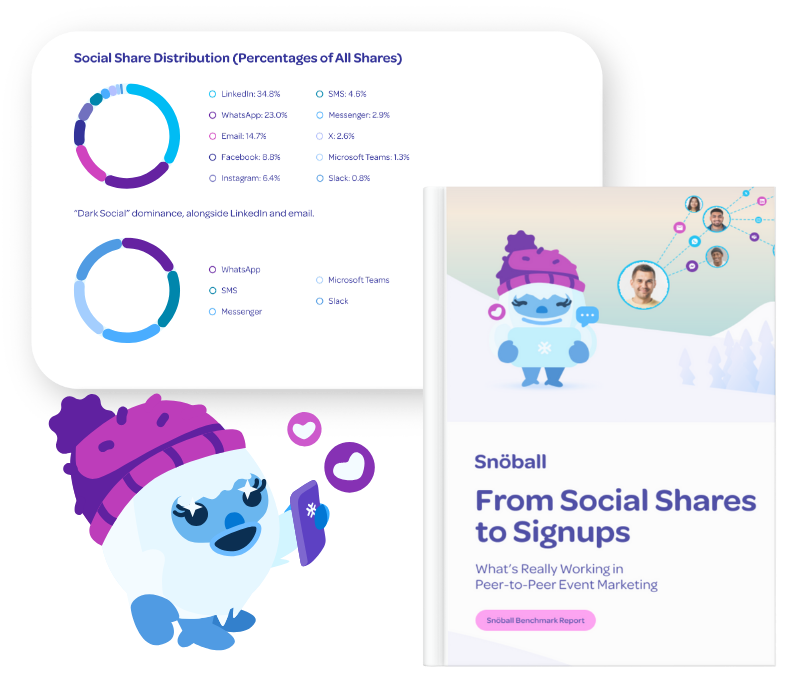It’s hard to take high-level event marketing strategies and turn them into real actions. So, let’s break things down! We’re going to take a deep look into exactly how you should be marketing your virtual events. But rather than talk from 10,000 feet, this time we’re keeping our feet on the ground with 10 tactics you can actually use and how to get them done.
1. Optimize your event website
Optimize is the buzzword of the week – it means to take something and improve it to its maximum efficiency. When we want to optimize a website, we need to first figure out what we want the event website to do. Obviously, we’re looking to drive conversions – do we want registrations, newsletter sign-ups, etc? But, first, we need to identify our user’s personas and understand how each user journey is supposed to look before you can build your event website to convert.
Use these questions to frame the journey for each user type for your event and build their journey around your goals.
- How is your content presented? Are you driving thought leadership to support your brand or are you intending to directly inform about your event?
- Are you expecting an influx of new attendees? How are you educating them about your organization?
- Are there multiple access areas of your website? For example, an exhibitor logs in to an exhibitors management portal, an attendee might sign in to start building their agenda, etc…) What are the goals of the different audiences visiting your website – why are they there?
- What information does a prospect need to make a decision to attend your event? The ‘What’s in it for me” question is key here.
2. Craft your event brand presence
When an event brings marketing assets out to the market, the biggest thing they need is consistency across imagery and messaging. The entire digital marketing footprint should feel like a single experience for prospects. Here’s how you start.
First, make sure you emphasize that your event will be virtual. Your potential attendees need a clear presentation of the expected delivery. The second step is to start brainstorming – explore any and all options, then pick a theme you want to work around. It can grow from the goal of your event or you can craft a theme around something seemingly unrelated! Identify three main components of your event to get started:
- Biggest value for your audience
- Most exciting event element
- Most impactful industry message
Remember, think of your audience when you make your decision – what would resonate with them? Bonus points if you’ve captured data to inform your team about your audience interests!
Let’s also explore a couple of examples. The first example, #GMIDGoesVirtual emphasized a full rebranding of the traditional event. The look, feel and experience are extremely different and reflect the extreme difference in event delivery.
Contrast this rebranding with ASAE Tec, which isn’t really a rebranding at all! They’re running the same style, but have clearly communicated the virtual experience. It’s two different approaches, with two different goals. ASAE prefers to create continuity, while GMID was excited to show off something new.
3. Stop posting, start engaging
Everyone’s always posting on social media platforms and keeping their social footprint alive. Here’s the problem – social media is made to connect us, not isolate our experience to a single feed. Fostering two-way conversations by participating in the active discussion is more effective in generating engagement building communities of interest around your event.
Here’s why you should be engaging – it builds trust and familiarity. You’ll drive more shares, more impressions, more clicks, and ultimately more conversions through engaging in communities than by posting in a vacuum. It also allows you to be more empathetic. The world is a scary place, especially in semi-quarantine where we find ourselves. Engagement helps connect with our audiences and be mindful of everyone’s current situation.
Use social to introduce the virtual transition of your event. Give soundbites that reassure, educate, and train participants on a new event experience delivered all digitally. Take NECA LIVE as an example – they introduced the event and what to expect in an unexpected situation.
4. Create dedicated event landing pages
We’ve mentioned the importance of your audience and identifying their segments before. And there’s a reason! Your segments allow you to personalize how you communicate with your target audience with more effective messaging. It speaks to their interests and communicates a what’s-in-it-for-me type of message.
Your event landing pages are the same way – don’t throw everyone into a single intake point. Tailor your event landing pages to different audiences and event marketing campaigns. Not only will you be more successful in converting, you also have access to more detailed analytics for each of your audience segments. Use it to improve your user experience and brand delivery!
5. Deliver a consistent user experience
Related strongly to brand presence, events need to show a consistent user experience throughout their marketing assets. The migration from a social media post, to an event landing page and onto the official event website should feel like one website.
This is extra important for a hybrid or fully virtual event. Your event website is the entry point to your digital platform – it needs to guide people effectively to actually convert the registrant into an official attendee.
And an effective user experience (UI/UX For Event Websites: Part 1 and Part 2) doesn’t just emphasize your brand – it brings your digital assets to life. It helps bring your audience exactly where you want them to go – through your messaging and to your conversion point.
6. Fast forward and hit play on video marketing
This tactic should be coming to a screen near you and every event marketing campaign you run. Video content is the King, the Queen and everything in between. When you build out your different assets, make short videos an essential piece of as many as possible.
[perfectpullquote align=”full” bordertop=”false” cite=”” link=”” color=”” class=”” size=””]FACT: 59% of executives agree that if both text and video are available on the same topic, they are more likely to choose video. – via wordstream[/perfectpullquote]
There are great tools to capture short videos or create your own animated features. It takes a little bit more work, but you’ll be rewarded with higher engagement and a more informed audience. Create speaker videos, allow exhibitors to share their products, or use attendees captures to promote your event. Platforms like Vocal Video or animaker are great places to start.
Video is simply the most effective way to promote your digital content from both an algorithmic sense (social media and google prioritize certain content, with certain elements) and from a direct engagement sense. People are far more likely to engage with a video than they are to read a block of text – viewers retain 95% of a message when they watch it in a video.
7. Do email marketing right
Alright, this is the toughest one to do effectively. Email is an oversaturated if still very effective communication channel. The worst part? Unlike social media and search, you can’t game the system – there’s no algorithm to propel your content forward. That means you’ll ride or die on your own subject line, content, and user experience.
Here are a few ways you can test and optimize your email campaign:
- Run A/B subject line tests and analyze open rates. You only care about open rates here – the subject line is the capture, not the conversion.
- Build multiple templates, with reorganized content and conversion points. Look at your click rates between templates and find the highest performer.
- Send according to the segment. Your content and subject line should be segment specific to maximize your subject line relevance.
- Experiment with different sending times. In the current situation, many professionals are juggling homeschooling and work from home. After supper might get you higher open rates.
- Try different senders (the FROM name). Sometimes a fresh face helps drive higher open rates and more content engagement.
8. Yes, influencer marketing is a thing for events
Everyone has influence. Every member of your audience – whether they’re speakers, sponsors, exhibitors or attendees – is a potential advocate for your event. Event organizers should be doing all they can to activate this untapped marketing resource. Create incentives for your influencers and run mobilization campaigns throughout the pre-event cycle to spread the word.
The goal is to get your audience to spread your message. Encourage crowdsourced content and celebrate your audience’s participation! Your audience has access to a pre-tailored set of professional prospects – it’s much more likely that their social and professional connections are interested in your event. Make it easy for your audience to share your message and they’ll become your most effective event marketing channel. In fact, #GMIDGoesVirtual more than tripled their attendance in less than three weeks by mobilizing their audience through Snöball.
9. Tell an extendable story
Your story is the most important piece of your messaging – it embodies your theme and brand while tying everything back into a relatable experience for your audience. But your story needs to be broad enough that it resonates with everyone – this is one place you don’t want to be segmented.
Your story tells the value of your event, it shares why people should be excited and what makes your event different. An extendable story takes those elements and distills them to their most basic components – take those components and build your segment-specific messaging. Here’s what I mean:
The intrinsic value of a tradeshow is the connections, which lead to business. Each segment at a tradeshow – the attendees and exhibitors, the different industry verticals, and buyer/seller interests – they all tie back into making connections. When you craft segment-specific messaging, remember the core value you’re driving. Tell the story behind why your virtual event is effective at meeting their needs – how are you doing it and why should they care?
This also plays into ongoing event marketing during a multi-day virtual event. Given that people can sign-up after the first day, make sure your story is easy to share with your audience. They’ll help spread the word if your virtual event is crushing it!
10. Let’s play a game: Guess what made a comeback?
What was once a required feature, slipped into obscurity. Event organizers and exhibitors have brought gamification to the exhibit hall floor for years, with varying degrees of success. But virtual events are a different animal (and the same beast).
Seriously, gamification at virtual events is on the money. We’ve seen some crazy giveaways to grow attendance and world record attempts at registrations that resulted in some off-the-chart numbers.
And it’s not just an acquisition tool. Gamification is one of the best ways to prevent dropoff from registration to attendance – reward people for coming to the live virtual event! It’s also a great way to inspire engagement during virtual events – there’s nothing like a friendly competition between attendees to get people’s eyes glued to the screen.
Bottom line:
There’s no one-size-fits all virtual event marketing checklist. Each and every virtual event has different values, different presentations, and different pain points that they’ll need to overcome throughout the acquisition journey.
But, if you’re looking to find the right tactics for your virtual event marketing tool belt, take these tips and to start crafting your perfect virtual event promotions. And if time and resources are an issue, we can help. We can up your event marketing game, while you focus your time and available resources on planning your next virtual event.





